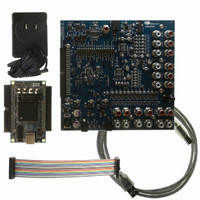CDB48500-USB Cirrus Logic Inc, CDB48500-USB Datasheet - Page 21

CDB48500-USB
Manufacturer Part Number
CDB48500-USB
Description
KIT USB EVALUATION FOR CDB48500
Manufacturer
Cirrus Logic Inc
Datasheet
1.CDB48500-USB.pdf
(52 pages)
Specifications of CDB48500-USB
Main Purpose
Audio, Audio Processing
Embedded
No
Utilized Ic / Part
CS485XX
Primary Attributes
32-Bit Audio Processor, I2C or SPI
Secondary Attributes
Graphic User Interface, 12-ch Analog Audio Input & Outputs, Optical Out- S/PDIF
Description/function
Audio A/D
Operating Supply Voltage
9 V to 12 V
Product
Audio Modules
Supply Current
1 A
For Use With/related Products
CS48520, CS48540, CS48560
Lead Free Status / RoHS Status
Contains lead / RoHS non-compliant
Lead Free Status / RoHS Status
Lead free / RoHS Compliant, Contains lead / RoHS non-compliant
Other names
598-1284
CDB48500 System Block Descriptions
CDB485x00-USB Evaluation Kit Guide
3-5
3.1.8 CS8416 S/PDIF RX
3.1.9 CS42448 Audio CODEC
3.1.10 Memory
3.1.11 Audio Clocking
The CS8416 (U3) is a 192 kHz S/PDIF receiver with an integrated input multiplexer. The two S/PDIF input
jacks (RXP-RXN) are connected to the CS8416. Only one of the optical or coaxial S/PDIF jacks can be
used at a time and is automatically selected by the CS8416. When S/PDIF audio is being processed, the
CS8416 must master MCLK for the system (see
The CS42448 (U4 and U5) is a high-performance, multi-channel audio CODEC capable of supporting
sample rates up to 192 kHz on its 6ADCs and 8 DACs. There are two of these devices on the CDB48500
and are used for all analog-to-digital and digital-to-analog conversions.
All analog inputs (AIN_1A-AIN_6B) and all analog outputs (AOUT_1A-AOUT_6B) are connected to the
CS42448s. The microphone input shares the AIN1_5 ADC with the AIN_3A RCA jack. When the
microphone is in use, the AIN_3A RCA jack is ignored.
When analog audio is being processed, the 24.576 MHz crystal for the CS485XX must master MCLK for
the system (see
The CDB48500 is populated with two 4 Mbit SPI flash devices and one I
to I
with both standard 8-pin serial flash pinouts. The serial control lines are shared by both footprints, and a
chip select 0 ohm jumper resistor (R101) is populated to make U13 the active device. To make U11 the
active device remove R101 and populate R110 with a 0 ohm resistor.
There is also a jumper (J105) to select Program or Normal (Run) operation of the SPI flash devices. In
program mode the CDB USB MASTER card will use the DSP_CS line to control the flash while holding
the DSP in reset with the DSP_RST line. For program mode jumper pins 2 and 3 on J105. In normal the
DSP controls the SPI device. In I
EEPROM. For normal mode jumper pins 1 and 2. The feature to program flash from the CDB USB
MASTER is not yet supported.
Clocking architecture is one of the most important aspects of a digital audio system. The input and output
clock domains of the DSP must be synchronous when delivering audio data in an isochronous fashion
(constant bitrate delivery), even if the input/output domains operate at different frequencies (e.g.
48 kHz input/96 kHz output). The CDB48500 can operate in three different clocking modes. Each of these
modes is explained in the following sections.
2
C is changed in Software. There are 2 SPI flash footprints (U11, U13) on the board for compatibility
Section 3.1.11.
for details).
2
C mode no jumper change is required for program or normal mode of
©
Copyright 2008 Cirrus Logic , Inc.
"Audio Clocking" on page 3-5
2
C EEPROM. Selection from SPI
for details).
DS784DB1



















